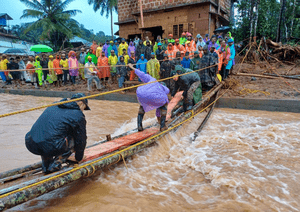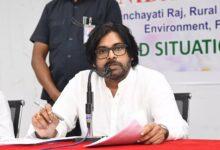
The death toll in the Wayanad landslide disaster on Friday reached 297, said officials, adding that 206 people continue to be missing.
The rescue operations continued on the fourth day of the state’s worst-ever natural calamity.
More than one thousand-member rescue team drawn from various forces besides locals divided into nine groups are working tirelessly to help people and search for the missing ones.
The worst-affected landslide areas of Churalpara, Velarimala, Mundakayil, and Punchirimadom.
With a 190-foot Bailey Bridge now erected, the connectivity between Churalmalai and Mundakayil has been restored.
Sniffer dogs have also been pressed into service. The rescue team is also equipped with heavy earth-moving equipment.
An officer heading the operations said there were some houses buried in one of the affected places where they were headed.
“Around 10 houses were there at the place we are reaching soon and according to what we are being told there might be some people, maybe alive,” said the official.
Currently, there are now 91 relief camps where 9,328 people have been evacuated safely.











